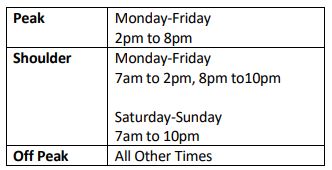| University | Singapore University of Social Science (SUSS) |
| Subject | EEE6006: High Voltage Direct Current Transmission |
Problem Statement: A Case Study on Energy Efficiency
Since 1 July 2016, electricity consumers in Singapore pay a standard flat electricity tariff for their electricity usage. In an effort to encourage energy-saving and to reduce energy demand during peak hours (i.e. reduce peak demand), the Energy Market Authority of Singapore decides to mandate electricity tier tariff package to be offered EEE6006 to all electricity consumers in Singapore in 2020. The objective of tier tariff is to encourage electricity consumers to use electricity during off-peak hours whenever possible.
The tier tariff hour structure is tabulated as follows. Please see appendix for tariff rates for each of you.

Singapore Institute of Technology is planning to upgrade all the PCs in the laboratories. Please see appendix for the number of PCs in the laboratories for each of you.
Hire a Professional Essay & Assignment Writer for completing your Academic Assessments
Native Singapore Writers Team
- 100% Plagiarism-Free Essay
- Highest Satisfaction Rate
- Free Revision
- On-Time Delivery
The options are:
Base Scenario (business as usual)
OptiPlex™ GX280 Mini Tower and 1704FPVt Screen
(Capital Cost $1500 per computer including screen, Datasheets for Tower and Screen provided)
Option 1 (energy-saving option if cost-effective)
Precision M20 laptop
(Capital Cost $1600 per computer, Datasheet for M20 provided)
The computers will operate 350 days per year (250 weekdays and 100 weekend days). See data sheets provided for energy usage in the three modes of operation namely, On, Standby and Off in the table below.
| Mode of Operation | Hours Operating |
| On (Max Power) | 10 am-2 pm (4 hrs per day) |
| Standby (Low Power) | 8am-10am & 2pm-7pm (7 hrs per day) |
| Off | 7 pm-8 am (13 hrs per day) |
Based on the information obtained from this Assignment info sheet and the product datasheets, answer the following questions:
a) Use the Excel spreadsheet to calculate the total expected yearly energy usage (kWh) and energy cost ($) of the two systems (BAU and Option1).
b) Assume the systems will last for 5 years and a discount rate of 7%. Calculate the Net Present Value (NPV) for Option 1 compared to the base case.
c) Assume the average CO2 intensity for electricity generated by power generation companies in Singapore is 0.43kg CO2/kWh, calculate the estimated yearly CO2 emission for the two systems.
d) Which option is more economical? Explain your decision.
e) Which option is more eco-friendly? Explain your decision.
f) Electricity prices are expected to rise by 10% per year for the next 5 years.
Recalculate the NPV of Option 1 compared to the base case, on this basis.
g) In one paragraph, summarise your findings and provide a recommendation with a brief explanation.
Writing an EEE assignment on the case study on Energy Efficiency in Singapore is not a walk in the park. Students should have an in-depth understanding of the subject matter. You must be familiar with the SUSS University-level format required to write the paper. SingaporeAssignmentHelp.com provides the best writing help in electrical and electronic engineering assignments. We have delivered over 25000 online electrical power engineering assignments till now and all our clients are satisfied with our services. Get any engineering assignment help from us to see the difference in your grades.
Looking for Plagiarism free Answers for your college/ university Assignments.
- INDIVIDUAL RESEARCH PROJECT: MERGERS AND THEIR IMPACT
- PSS388 End of Course Assessment January Semester 2025 SUSS : Integrated Public Safety And Security Management
- PSY205 Tutor-Marked Assignment 02 SUSS January 2025 : Social Psychology
- Math255 S1 Assignment-2025 SUSS : Mathematics for Computing
- BUS100 Tutor-Marked Assignment January 2025 SUSS : Business Skills And Management
- CSCXXX SUSS : New System Development Using Java : Soft Dev Pte Ltd Project
- Cloud Computing: Fundamentals, Networking, and Advanced Concepts
- COS364 Tutor-Marked Assignment January 2025 Sem SUSS : Interventions for At-Risk Youth
- FMT309 Tutor-Marked Assignment 01 SUSS January 2025 : Building Diagnostics
- HBC203 Tutor-Marked Assignment 01 January 2025 SUSS : Statistics and Data Analysis for the Social and Behavioural Sciences

